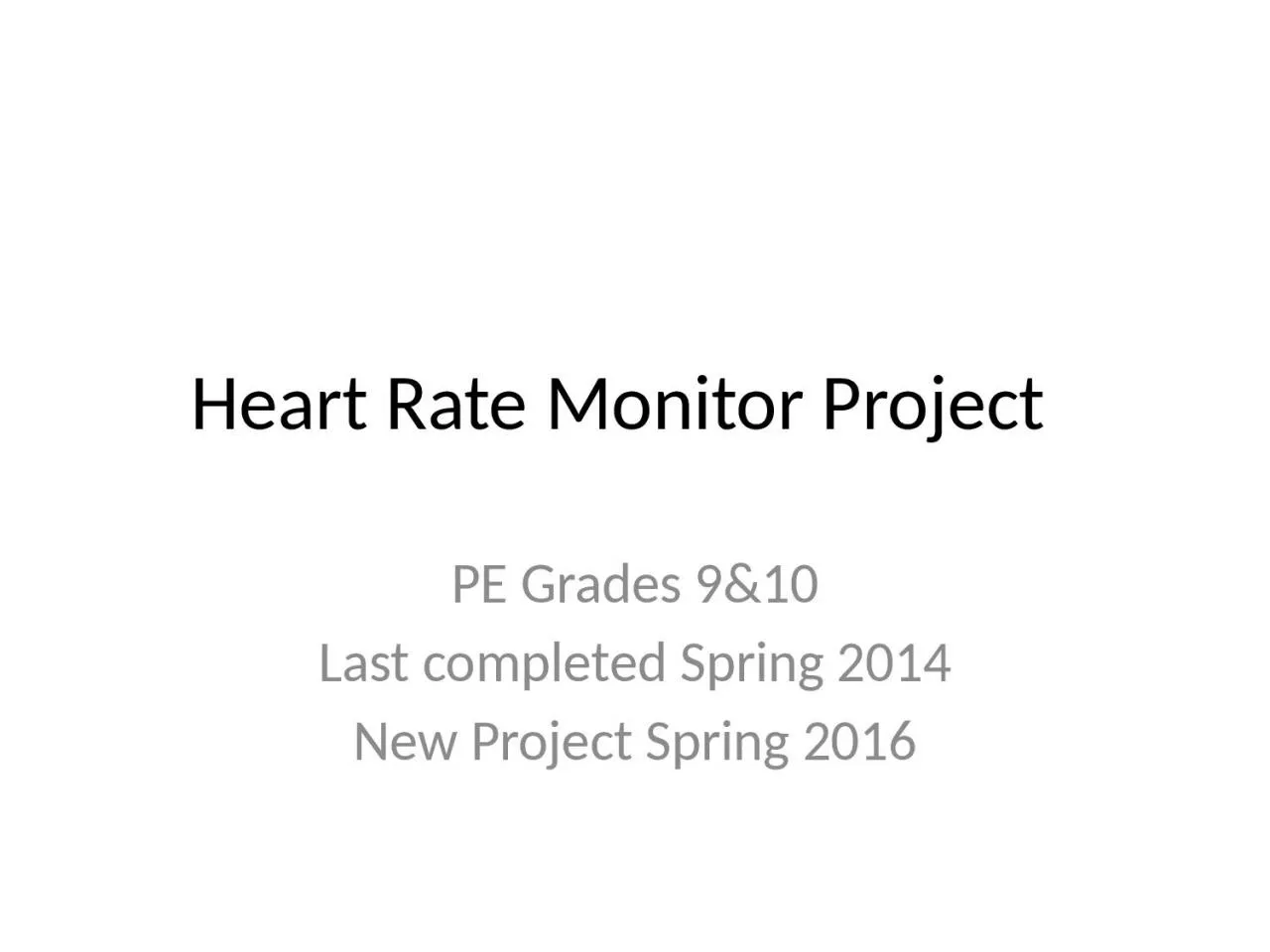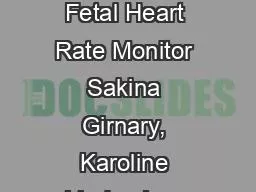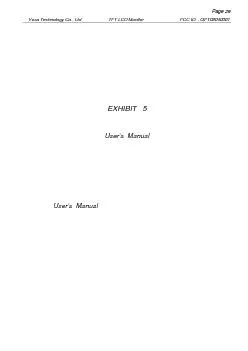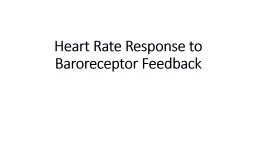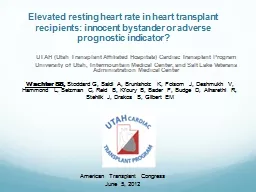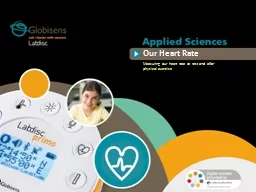PPT-Heart Rate Monitor Project
Author : beatrice | Published Date : 2024-01-29
PE Grades 9amp10 Last completed Spring 2014 New Project Spring 2016 Heart Rate Data Collection Record 1 Date 3714 Activity XC Skiing Time in Zone 12006 min
Presentation Embed Code
Download Presentation
Download Presentation The PPT/PDF document "Heart Rate Monitor Project" is the property of its rightful owner. Permission is granted to download and print the materials on this website for personal, non-commercial use only, and to display it on your personal computer provided you do not modify the materials and that you retain all copyright notices contained in the materials. By downloading content from our website, you accept the terms of this agreement.
Heart Rate Monitor Project: Transcript
Download Rules Of Document
"Heart Rate Monitor Project"The content belongs to its owner. You may download and print it for personal use, without modification, and keep all copyright notices. By downloading, you agree to these terms.
Related Documents

